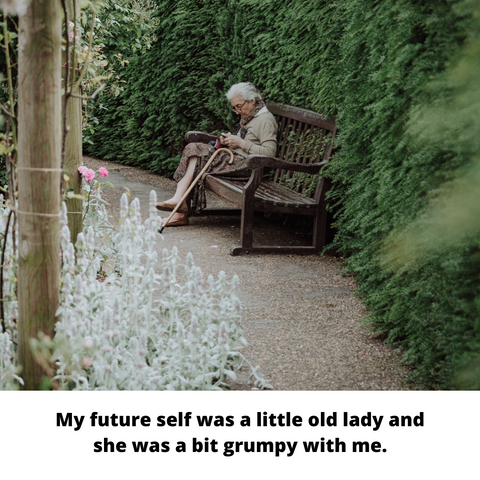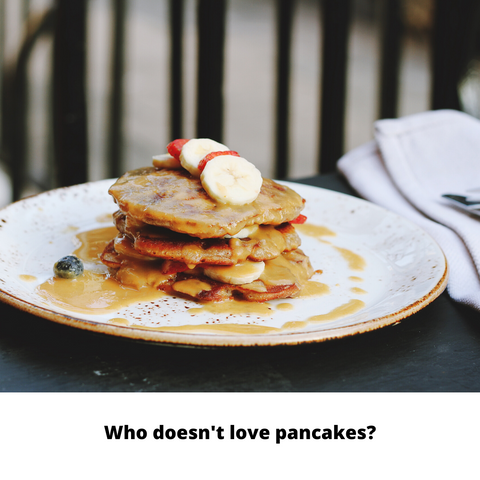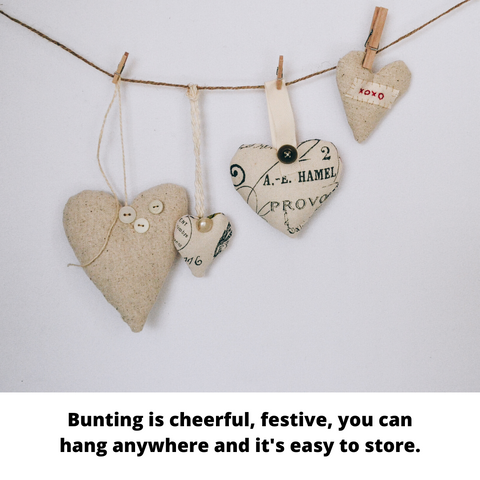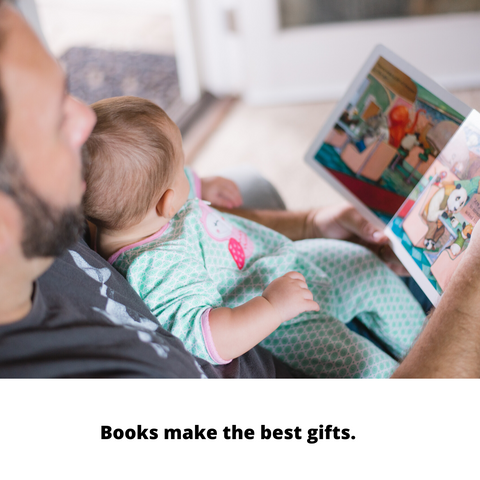My Galentine/Palentine/Valentine Shopping Spree
I've been a grinch about holidays in general and Valentine's Day in particular. I signed the first of my divorce papers on Valentine's Day. Remembering that cold, winter morning still gives my heart a crack but lately I've been thinking about heart opening exercises beyond yoga poses. Traveling and walking the beach has given me lots of time to think. I remember a small town in Oklahoma that had the coolest building- all deserted except for a pizza joint. It was sad. One way to be sure this doesn't happen is to shop small and local. To vote with your dollars. I decided to go on a shopping spree for a few Valentine/Galentine/Palentine gifts in downtown Apalachicola, Florida.

I've been on a solo travel, escape the snow road trip. My temporary home is an Airstream trailer- an Air B n B in a local's backyard. It's a teeny trailer community where I feel completely safe. Populated by women and dogs. The owner and her big dog Zeek as well as two fellow travelers and their not so big dog, Apunne. I decided a few small treats from downtown Apalachicola would be a sweet treat. I also had the goal of shopping as plastic free as possible.
I set a budget for myself, which was between $20 and $30, which is an important holiday consideration. Its counter productive to work on opening your heart without paying attention to your budget. It's not going to feel good if you over spend. My list was a small treat for each women, a treat for 3 dogs, some cards to mail and a good cup of coffee. I went with cash because small businesses love cash and it also helps me keep to my budget. Spending twenty or thirty dollars in a downtown isn't going to keep any business in afloat but ten people spending that amount will. Where you spend your money matters. It's a simple way to spread some love.
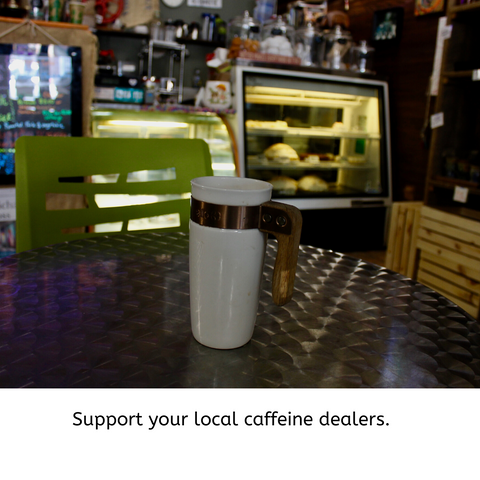
I started with a cup of coffee- so YUM! One thing I've been missing is my morning coffee routine and my delicious cuppa. I'm not a fan of coffee machine coffee or store brand beans. I had my reusable cup, the service was great and I ended up treating myself to a sandwich.
I wandered into quite a few different stores with an open mind. I knew there was a dog shop which made biscuits so that was my first stop. Oysterbones is part of the Dixie Theatre Company as its one way the theatre raises money. Talk about keeping it in the community and how your dollars go to support a town- this is about as real as it gets. I bought 3 biscuits packed in a paper bag.
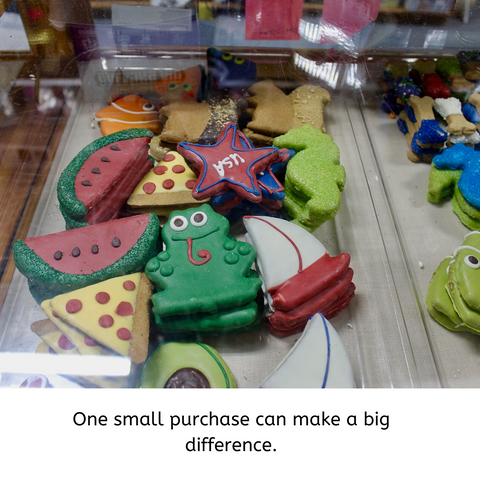
I decided chocolates were the best gift for the three gals since I really now very little about them. Just that they are nice and love dogs. The coffee store is also a chocolate shop. I went for dark chocolate with tupelo honey, a speciality honey in the area. I asked for a little packaging as possible but also each chocolate was for a separate person. the chocolate maker packed each one in a small cardboard box. Not zero waste but plastic free.
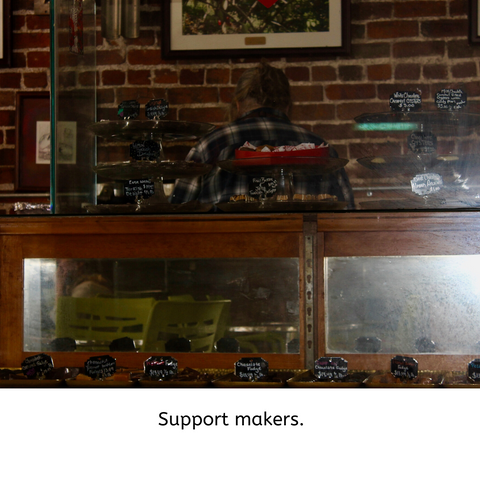
Cards were the hardest thing to buy plastic free. I went into quite a few stores, many with lovely selections of card pre packaged in plastic. I get why this happens, part of the appeal of plastic is how it keeps items "clean and fresh" before purchase. I still love to buy and mail cards. It's a treat to get something besides junk mail and I wanted to send some love to special pals. I finally found not local cards but a company that package plastic free and they were very reasonably priced. I would have preferred to purchase local cards from area artists but the cards from Positively Green were cute, plastic free and reasonably priced- all factors important to consider.
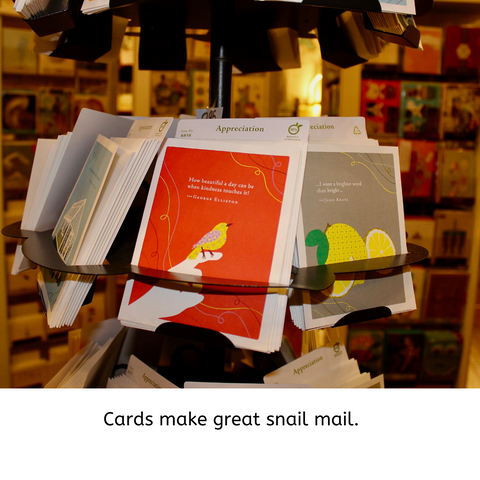
Voting with your money sends a message about the world and economies you want. You still have to make decisions to fit your values, budget and beliefs but it's such an important step in supporting small, local and sustainable businesses that supoort communities and our environment.




